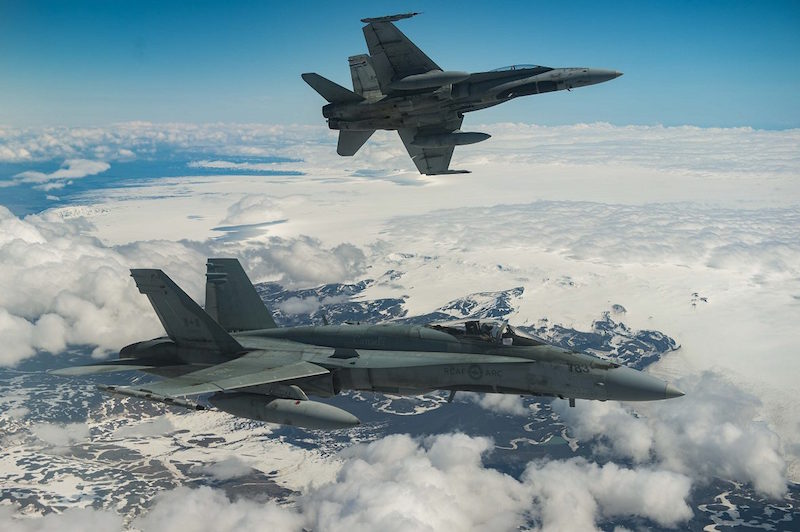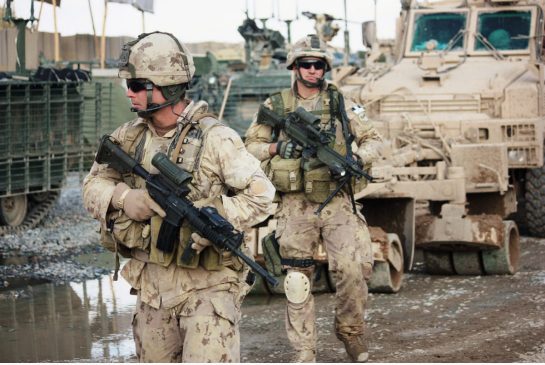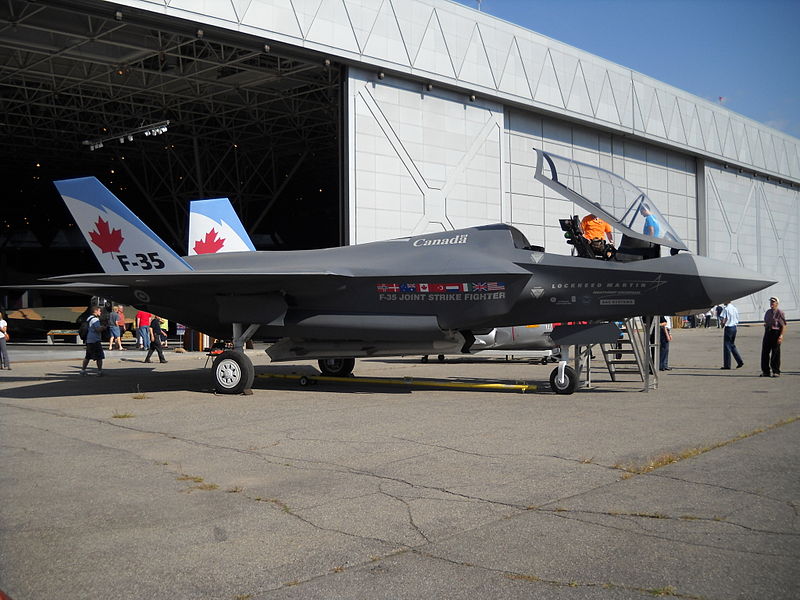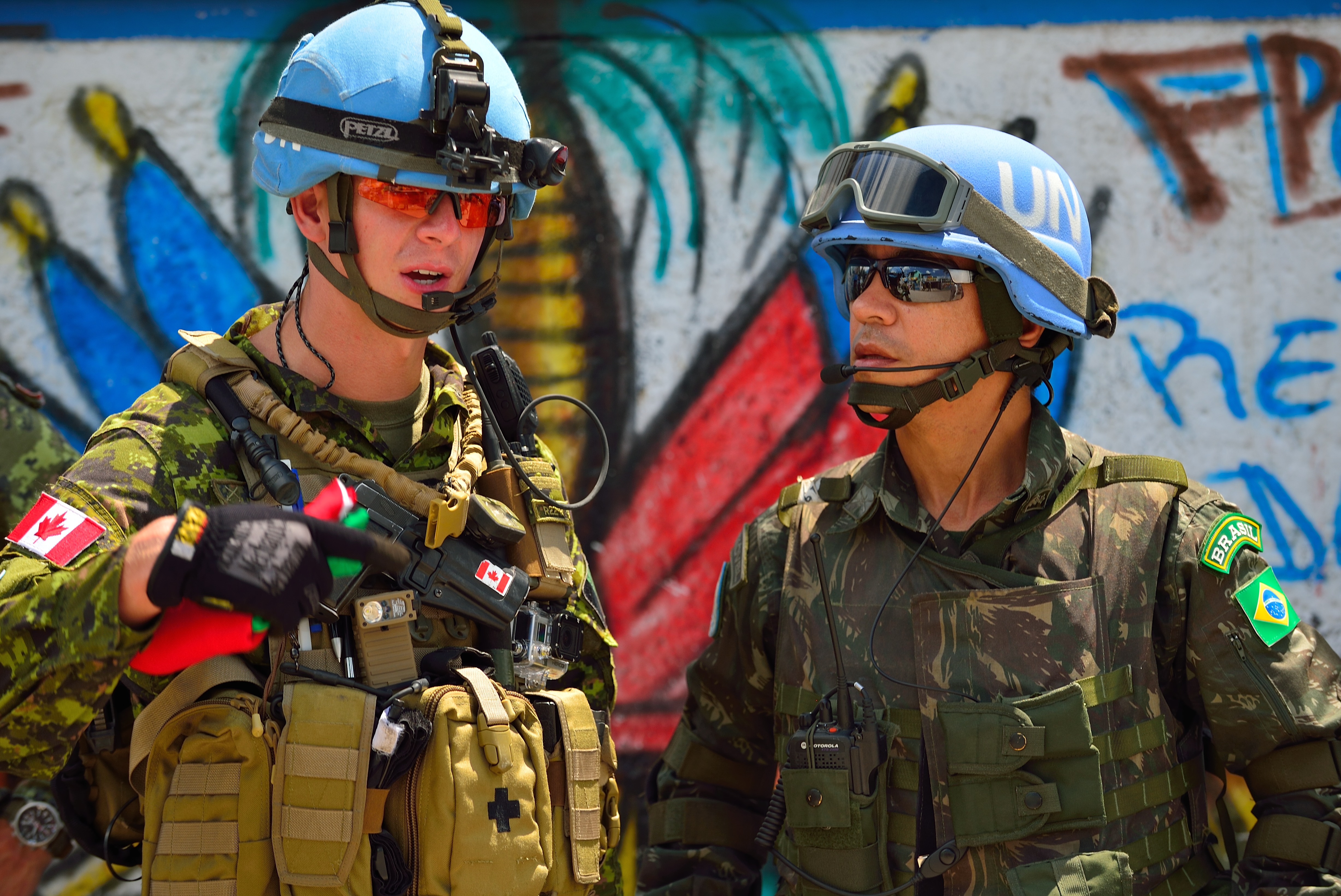Relations between Canada and Iceland date back more than 1,000 years, and there are nearly as many Canadians with Icelandic heritage as there are people currently living in Iceland.
Those trans-Atlantic bonds were strengthened even more through recent NATO activity that saw Canadian sailors train around and pilots fly over Iceland.
NATO’s Submarine Surveillance – known as Exercise Dynamic Mongoose 2017 – ran from June 26 to July 8 off the coast of Iceland. It featured ships, submarines, aircraft and personnel from ten Allied nations – including Canada – which had gathered in the North Atlantic for anti-submarine and anti-surface training. Its key objective was to enhance interoperability proficiency in anti-submarine and anti-surface warfare skills among all participants.
Canada was well represented in Dynamic Mongoose by the crew of HMCS St. John’s. They went to Iceland after spending several months patrolling the Mediterranean and Black Sea as part of an immediate reaction force known as Standing NATO Maritime Group 2.
According to Lieutenant (Navy) Emily Anglin, HMCS St. John’s Executive Officer, this was the first time on deployment that HMCS St. John’s worked with the Netherlands, Denmark, Norway, and Iceland. As she recently wrote, they joined Britain, France, Italy and the USA in sending surface, subsurface and airborne assets to participate in Dynamic Mongoose.
This was the second year in a row that Dynamic Mongoose has been held, with Canada participating in last year’s exercise in the Norwegian Sea.
“The presence of NATO in the waters south of Iceland is a sign of an increased focus on the North Atlantic and will strengthen the Alliance’s knowledge and experience of the area,” Arnor Sigurjonsson Director of Department of Security and Defence in Iceland’s Ministry for Foreign Affairs told NATO’s Allied Maritime Command.
Dynamic Mongoose began shortly after the conclusion of Canada’s role in the Air Task Force (ATF)-Iceland.
In this case, the Royal Canadian Air Force deployed six CF-18’s from 433 Tactical Fighter Squadron at 3 Wing Bagotville, Quebec, along with personnel support from 2 Wing Bagotville, as well as intercept controllers from 22 Wing North Bay, Ontario, for a total of approximately 180 personnel. The Task Force was commanded by Lieutenant-Colonel William “Billy” Mitchell, commanding officer of 433 Tactical Fighter Squadron.
ATF-Iceland, based out of Keflavik Air Base, provided continuous air surveillance and interception capability that, according to National Defence, could be launched “immediately to meet and identify unknown airborne objects within, or approaching NATO airspace.” ATF-Iceland conducted the same activities this past June as were previously carried out under Operation IGNITION in 2013.
“Canada is a committed NATO ally and our commitment to the trans-Atlantic bond is as strong as ever,” said Defence Minister Harjit Sajjan in an RCAF news article posted as the patrol began. “Air Task Force-Iceland is part of the renewal of the mandate of Operation REASSURANCE announced by the Government of Canada in July 2016 at the NATO Warsaw Summit in Poland.”
As is the case with the RCAF patrols over Iceland, Canada’s role in Dynamic Mongoose falls under the aegis of Operation REASSURANCE. So, too, does Canada’s current mission in Latvia.
The CF-18’s headed home after wrapping up Canada’s third rotation supporting Iceland’s Peacetime Preparedness Mission on Friday, Jun. 16, 2017.
“This [air force] mission is very important to Iceland to show the commitment of NATO and Allied Nations to support Iceland during their peacetime operations,” Icelandic Base Commander Jon Guonason was quoted as saying in an article published by SHAPE Public Affairs.
Being warmly received while in Iceland, the Canadians wanted to give back to their fellow NATO country.
As reported in “The Maple Leaf,” Lieutenant-Colonel Mitchell – a CF-18 pilot and long-distance runner – ran the 46 kilometres from Reykjavik to Keflavik Air Base to raise money for the children’s charity Umhyggia – a fund that supports local families suffering financial distress from their child’s illness.
Sending the Canadian military to Iceland is nothing new. Indeed, the roots of these recent activities were planted years ago.
On May 22, 1940, the war cabinet of Prime Minister William Lyon Mackenzie King decided to send a battalion to Iceland to support British troops that had landed on that strategic island on May 10, 1940 (the same day as the Germans began their blitzkrieg roll into France).
With the help of Canadian troops during World War II, Iceland became a critical Allied base for convoys, Ferry Command, RCAF air patrols, and a large and long-standing American military presence that lasted until 2008. Iceland was one of the twelve founding members of NATO.
Of note for those keen on history, the recent RCAF patrol over Iceland began 77 years to the day – on May 22, 2017 – after Mackenzie King’s wartime decision to send troops there.
Photo: “Two Royal Canadian Air Force CF-188 Hornet fighters from 433 Tactical Fighter Squadron fly over Iceland on May 31, 2017 during an Operation REASSURANCE surveillance mission.” (2017), by Corporal Gary Calvé. Imagery Technician ATF-ICELAND via Government of Canada National Defence.
Disclaimer: Any views or opinions expressed in articles are solely those of the authors
and do not necessarily represent the views of the NATO Association of Canada.




